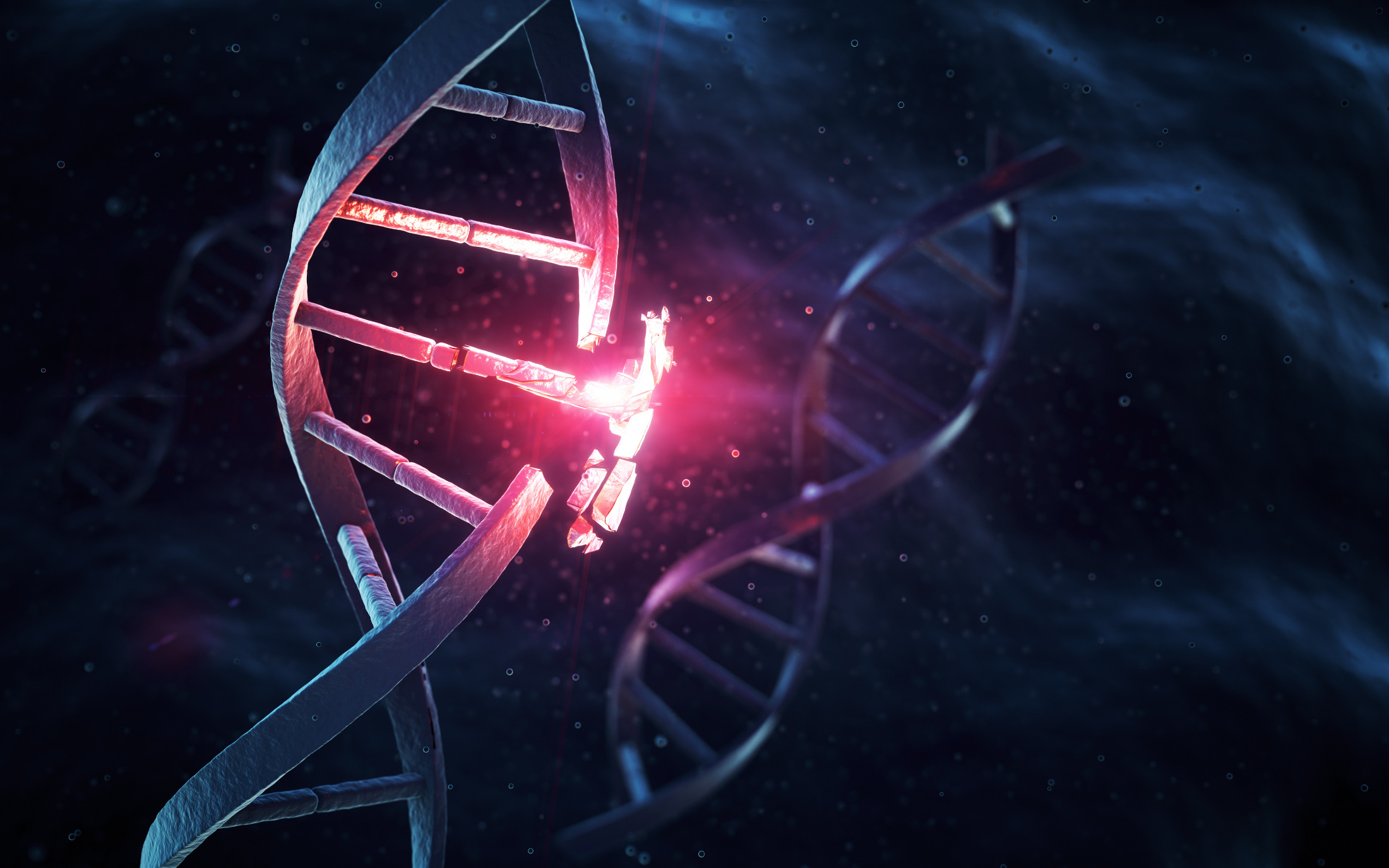
Energy deficiency illnesses are on the rise. More and more people – including young people – cannot escape the state of exhaustion. There is a lack of vital energy in every nook and cranny. Energy that used to be taken for granted. But what is behind this insidious process? The mitochondria, once powerful power stations, are losing efficiency. These microscopically small cell components play a decisive role in how alive you feel – and how quickly you age. It is no coincidence that mitochondrial dysfunction has been identified as one of the twelve Hallmarks of Aging – the fundamental ageing processes that scientists have identified as the main drivers of biological decline. With the right knowledge, you can intervene in this process and boost your cellular energy supply.
When the mitochondria are in crisis
Mitochondrial dysfunction is one of the twelve fundamental aging processes – the so-called Hallmarks of Aging. As an essential hallmark of ageing, it not only accelerates ageing itself, but is also directly linked to numerous age-related diseases: from neurodegenerative conditions to cardiovascular problems and metabolic disorders.
What exactly happens in your cells?
- The respiratory capacity of the mitochondria decreases,
- their membrane potential decreases, and at the same time
- they produce more harmful oxygen radicals (ROS).
A vicious circle develops: The weakened power plants produce less energy, but more cell-damaging substances – and thus accelerate their own deterioration.
The oxidative storm – How free radicals age your cells
The free radical theory of ageing is one of the most fundamental explanatory models for cellular ageing processes. Ironically, mitochondria are both the main source and primary target of these aggressive oxygen compounds. As we age, this system becomes unbalanced: mitochondrial function decreases while ROS production increases. These reactive molecules damage the mitochondrial DNA (mtDNA), impairing its replication and transcription and leading to a vicious circle of loss of function and further ROS formation. The oxidative damage accumulates over the decades and eventually manifests itself as visible signs of ageing – from declining energy levels to increased susceptibility to disease.
The genetic heritage of cellular power plants – Why mtDNA is particularly vulnerable
Unlike the DNA in the cell nucleus, mitochondrial DNA is hardly protected. It is exposed in the matrix of the mitochondria – exactly where most free radicals are produced. A fatal coincidence.
With advancing age, mutations accumulate in this mtDNA. Particularly noteworthy: if a cell exhibits severe mitochondrial deficiencies, a single mutated variant has often displaced the entire population of healthy mitochondria. Scientists speak of a “clonal expansion” of defective mitochondria.
This mtDNA damage dramatically impairs energy production and triggers a domino effect that ultimately compromises all cellular functions. Your cells don’t just age – they slowly suffocate from lack of energy.
Why mitochondria constantly fuse and divide
Mitochondria are not static organelles, but form a dynamic network that is constantly changing. They adapt to the energy requirements of the cell through fusion and fission. During fusion, two mitochondria merge into one larger one, while during fission, one mitochondrion is divided into two smaller ones. With increasing age, however, this finely balanced system is disrupted.
Studies on fruit flies, nematodes and mice show a clear picture: the mitochondrial network of aged organisms is more heterogeneous, fragmented and often consists of large, swollen mitochondria. In ageing stem cells in particular, the balance shifts towards fission – a process that contributes to the loss of stem cell functions and thus limits the body’s ability to regenerate.
Mitophagy fails – defective mitochondria are no longer disposed of
A crucial process for healthy mitochondria is mitophagy – a specialized recycling mechanism that specifically breaks down damaged power plants. This is a special form of autophagywhich serves to maintain cell health by removing defective mitochondria and recycling their components. As we age, this quality control mechanism increasingly fails.
The result: defective mitochondria accumulate, produce less energy and more harmful radicals.
This process particularly affects those mitochondria that already have a low membrane potential and can no longer fuse properly. They should actually be discarded – but instead remain in the cell and impair its function. The result is a vicious circle: the more defective power plants, the worse the cellular energy supply functions.
This effect is particularly dramatic in tissues with high energy requirements – such as the brain, heart and muscles. It is no coincidence that these are also the areas that are particularly susceptible to loss of function in old age.

NMN or NR –
Which NAD+ booster will set new longevity standards in 2025?
NAD+ and sirtuins – the molecular switches for mitochondrial health
A key molecule in mitochondrial health is NAD+ (nicotinamide adenine dinucleotide). This essential cofactor decreases dramatically with age – by up to 50% between the ages of 40 and 60. NAD+ is not only crucial for energy production, but also activates sirtuins – a family of proteins that are considered “longevity regulators”.
Especially the mitochondrial sirtuins SIRT3, SIRT4 and SIRT5 play a key role in maintaining power plant function. They regulate energy production, protect against oxidative stress and control mitochondrial dynamics. The good news is that you can positively influence these processes and improve mitochondrial function through targeted supplementation with NAD+ precursors such as NMN or NR.
Your strategy against the energy crisis – what really helps
Science has identified several effective strategies to optimize your mitochondrial function. Intermittent fasting and regular physical activity are among the most effective natural stimulators of mitochondria. Both interventions activate the biogenesis of new power plants and improve their efficiency.
At the supplement level, NAD+ precursors have proven to be promising. Nicotinamide riboside (NR) and nicotinamide mononucleotide (NMN) can replenish declining NAD+ levels and thus increase sirtuin activity. Also resveratrol and other sirtuin activators have also been shown in studies to have positive effects on mitochondrial function.
Substances such as spermidine and urolithin A are also of interest for mitochondrial quality control – they activate mitophagy and help to remove defective power plants. This combination of energy optimization and improved quality control forms the foundation for a successful mitochondrial strategy.
Energetic future instead of cellular exhaustion
Mitochondrial medicine has only just begun. As our understanding of cellular energy production increases, researchers are developing ever more precise interventions to combat age-related energy loss. Today you have the opportunity to put this knowledge to work for you – for more energy, vitality and health into old age.
The path to healthy mitochondria is not a quick fix, but a long-term strategy. But the rewards are immense: more energy in everyday life, improved cognitive function, increased physical performance and a reduced risk of age-related diseases. Your mitochondria are not just passive power plants – they are the active architects of your vitality and longevity.
Sources:
pmc.ncbi.nlm.nih.gov – The Mitochondrial Basis of Aging and Age-Related Disorders
pmc.ncbi.nlm.nih.gov – Oxidative Stress, Mitochondrial Dysfunction, and Aging
pmc.ncbi.nlm.nih.gov – Causal roles of mitochondrial dynamics in longevity and healthy aging
pmc.ncbi.nlm.nih.gov – Mitochondrial sirtuins, key regulators of aging
pnas.org – Evolution of the mitochondrial fusion-fission cycle and its role in aging
pubmed.ncbi.nlm.nih.gov – Aging shifts mitochondrial dynamics toward fission to promote germline stem cell loss
Image source: istockphoto.com
🩺 Medically examined on 14.10.2025
This article has been professionally reviewed by Dr. med. Alexander Hammoudaspecialist in general medicine with a focus on integrative medicine, functional medicine and prevention. In his private practice in Munich, Dr. Hammouda combines conventional medical expertise with modern longevity concepts. His focus: recognizing causes, strengthening health holistically and empowering people to take responsibility for their lives.
Disclaimer
This blog is for general informational purposes only and does not constitute the practice of medicine, nursing or other professional health care services, including the giving of medical advice, and no doctor-patient relationship is established. Use of any information contained in this blog or materials linked to this blog is at the user’s own risk. The content of this blog is not intended as a substitute for professional medical advice, diagnosis or treatment. Users should not ignore or delay medical advice for any medical conditions they may have and should seek the help of their healthcare professional for such conditions.









